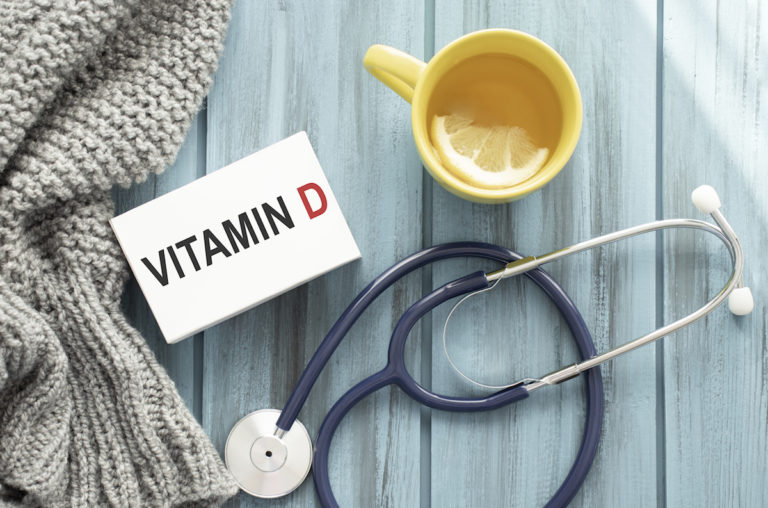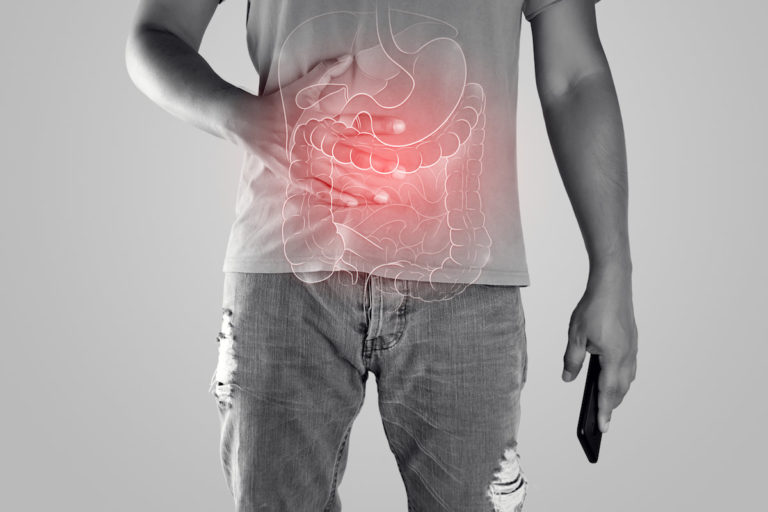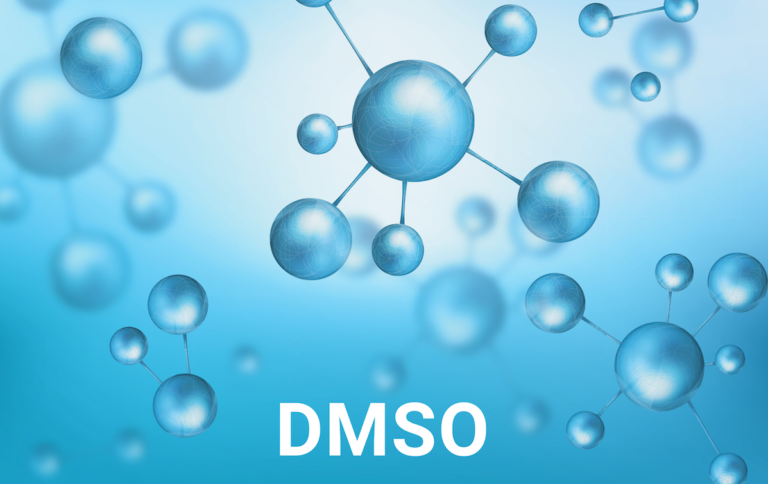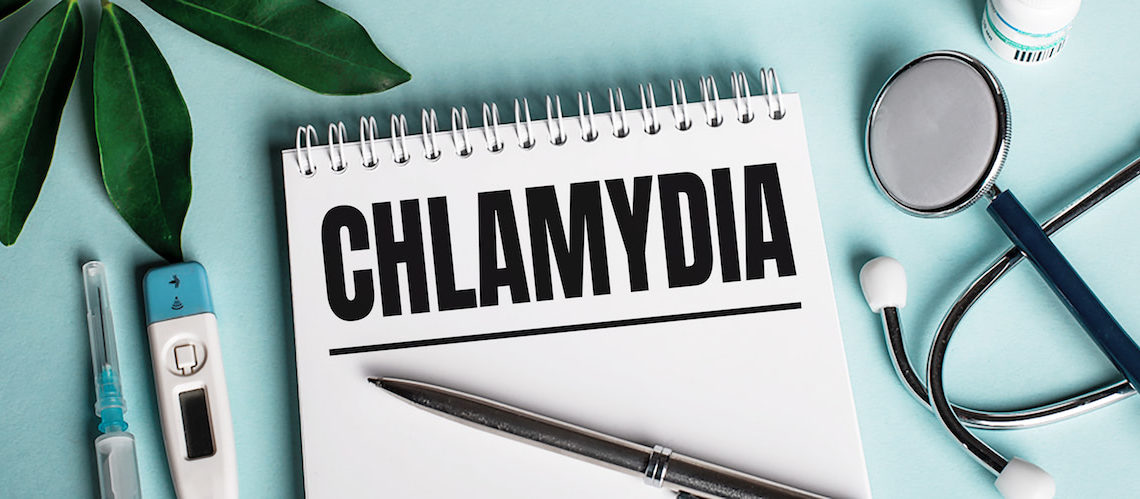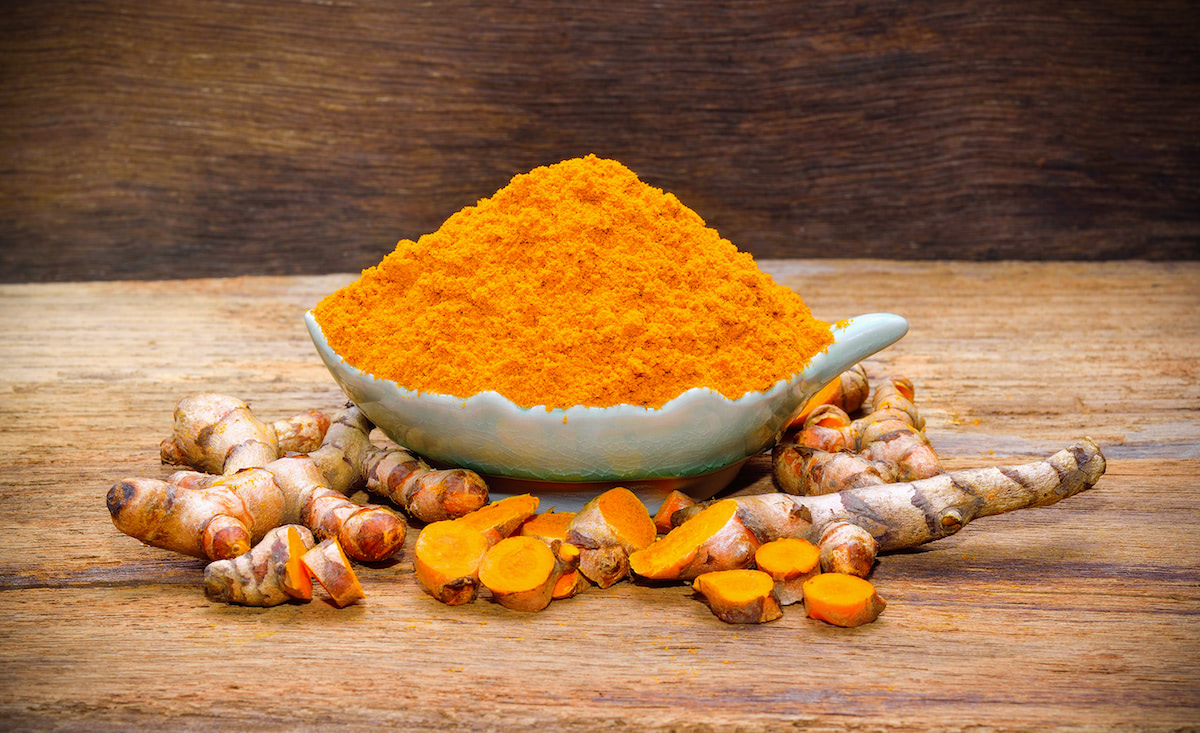Updated on 25. June 2022 from ÁYIO-Q Redaktion
Reading time: approx. 20 minutes
All important information about chlamydia infection
Chlamydia infection is caused by microorganisms. It can trigger various clinical pictures. Depending on the chlamydia subgroup, the genital area, the eyes or the respiratory tract are usually affected. Find out all the important information on the topic here: What are chlamydia? What signs do they cause? How exactly can a chlamydia infection be treated?
- Description
- Signs & Symptoms
- Causes
- Medical diagnosis
- Conventional medical treatment
- Progression
- Prevention
- 30 Natural & home remedies at a glance
Whoever speaks of a “chlamydial infection” usually means an infection of the urinary tract or the genital organs caused by certain germs. Often there are only mild symptoms or none at all, which is why the disease often goes undetected. The ECDC Annual Epidemiologic Report for 2018 recorded 149 out of every 100,000 people with a chlamydial infection. The trend is upward.
What is Chlamydia?
Chlamydia is the colloquial name for bacteria from the Chlamydiaceae family. This includes various species that cause different diseases in humans. However, anyone who “has chlamydia” usually means a sexually transmitted disease, i.e. an infection of the urinary tract as well as the sex organs caused by Chlamydia trachomatis serotype D-K.
Chlamydial infections are widespread and are among the most common STDs worldwide.
Not the chlamydia species you are looking for? Other chlamydia that cause disease are:
- Chlamydia trachomatis Serotyp A-C: Trachom.
- Chlamydia trachomatis serotype L1-L3: lymphogranuloma venereum
- Chlamydia pneumoniae: infections of the respiratory system (e.g. pneumonia).
- Chlamydia psittaci: ornithosis (putative high fever in parrots).
Chlamydia infection: signs and symptoms
Symptoms in women

In most cases, a chlamydial infection in women runs asymptomatic or only with very weak symptoms and therefore may not be noticed. Chlamydia therefore often remains undetected – and is neglected. Many of those affected therefore unknowingly become infected with the STI.
If signs and symptoms occur, chlamydia initially causes a purulent urethritis in women after about 2 to 6 weeks. This can become noticeable through numerous signs, such as:
- strong efflux (sometimes also strong smelling) or
- Burning and itching during urination
When chlamydia affects the cervix, fallopian tubes or ovaries, women may also experience symptoms such as fever or severe pain in the abdomen.
Signs and symptoms in men
In men, the first signs usually appear about two to six weeks after a chlamydia infection. Chlamydia can cause purulent urethritis and, in rare cases, epididymitis. Urethritis in men may be noticeable by various signs, such as:
- mucopurulent efflux
- pulling discomfort during urination
- Irritation as well as burning during urination
Men also do not always show signs of chlamydial infection, although rather less than women.
Depending on sexual practices, chlamydial infection (in both women and men) can also lead to pharyngitis or rectal inflammation.
If the chlamydia gets into the eye (for example, through the water during a shared bath with sexual activity), conjunctivitis is possible.
Infection in newborns
If a pregnant woman has a chlamydial infection, the chlamydia can be transmitted to the newborn during birth and cause conjunctivitis or pneumonia in the child.
Chlamydia infection: The causes
The cause of a chlamydia infection is usually unprotected sexual intercourse. This can lead to transmission and thus also to infection with the bacterial species Chlamydia trachomatis (serotype D-K).
If a pregnant woman has a chlamydial infection, the bacteria can be passed to the newborn during the birth process.
Incubation period
It takes an average of two to six weeks for the first signs and symptoms to appear after infection with chlamydia (incubation period).
Chlamydia: A closer look at the microorganisms

Chlamydiae are microorganisms that multiply exclusively in body cells and are also mainly found there.
Outside the cell, the chlamydiae exist as elementary bodies. This is the name given to the round, infectious form of the microorganisms, which has no metabolic process.
Inside the infected cell, the chlamydiae are located as so-called nodal bodies. In this form, the bacteria have an active metabolism and can also multiply by dividing into two. If the chlamydiae run out of nutrients, they transform into a kind of permanent type (so-called aberrant corpuscles) in which they can survive periods of deficiency. In this state, they have shut down their metabolic rate for as long as possible in order to consume as little energy as possible.
Chlamydiae cannot produce certain molecules themselves that are essential for both metabolism and reproduction: in particular, the nucleotides ATP, GTP and also UTP. In order to be able to replicate, they consequently “steal” these from the host cell. Since these nucleotides are very important energy components for the host cell, chlamydiae are also called energy bloodsuckers.
Contagion and spread
Chlamydia can enter the body through the mucous membranes. In the case of serotype D-K of Chlamydia trachomatis, these are the mucous membranes
- of the urinary tract as well as the genital organs,
- of the vocal cords,
- of the anal region,
- of the eyes or
- of the respiratory system.
There, the elementary bodies are the first to attach themselves to the cell membrane layer of the host cell. This works because the chlamydiae bring along healthy protein structures on their envelope that identify very specific protein scaffolds on the cell membrane layer of the host cell (so-called lock-and-key principle).
Docking onto these healthy protein structures triggers a whole chain of signals in the cell. In response, the host cell begins to “choke off” the bacteria sitting on the membrane layer and push them directly into the cell interior in a vesicle (supposed vacuole). In this way, the chlamydiae enter the cell. Chlamydiae are therefore sometimes also referred to as inclusion bodies.
In the vacuole, after about one to two hours, the elementary bodies transform into reticular bodies and reactivate their metabolism. About twelve hours later, the chlamydiae begin to multiply in the vacuole by dividing into two parts. In the process, the vacuole expands additionally within the cell. After 2 to 3 days, the cell finally ruptures and releases the newly formed chlamydiae. Shortly before this, the reticular bodies transform back into the metabolically inactive but infectious elementary bodies. The released chlamydiae can now infect further cells.
Chlamydia infection: The diagnosis
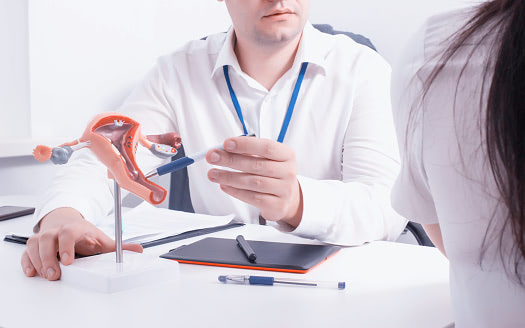
To find out whether a chlamydial infection is present, the doctor will first ask about signs and symptoms. For the medical diagnosis, a health examination and laboratory tests are also required.
If chlamydia is suspected, the doctor usually takes a swab (for women a swab from the cervix, for men a swab from the urethra) and sends it to the research laboratory. A urine sample can also help with the medical diagnosis.
A molecular biological method (polymerase chain reaction, PCR) can be used to find out whether the genetic material of the virus is present in the smear or in the urine.
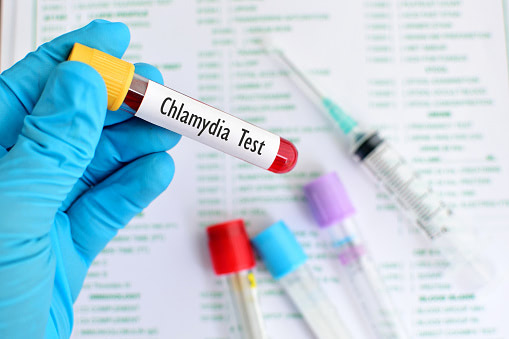
Whether contact with chlamydia has occurred can also be determined by detecting corresponding antibodies in a blood sample. However, a positive result only shows that the immune system has come into contact with this microorganism, but not when. This means that no information is obtained as to whether the infection is acute or whether it occurred some time ago.
In the case of a severe infection, it may also take several weeks before the body’s immune system begins to produce antibodies against the chlamydia. Thus, an unfavorable test does not necessarily rule out the presence of a chlamydial infection. Nevertheless, an antibody test can serve as an indication of possible causes of infertility due to chlamydial infection.
Theoretically, it is possible to “grow” chlamydia. However, as the cultivation of the microorganisms in the laboratory is quite complex and inaccurate results are also easily possible, this technique is generally excluded.
Chlamydia infection: Chlamydia examination
A possible cause of inability to conceive in women can be a (frequently undetected) chlamydia infection. Young women up to and including 24 years of age therefore have the opportunity to be tested for chlamydia 1x per year. For this free examination, only a urine sample is required.
If a pregnant woman has a chlamydial infection, there is a risk that the microorganisms will be transmitted to the newborn during the birth process. For this reason, screening for these pathogens is part of the preventive medical checkup for expectant mothers in Germany.
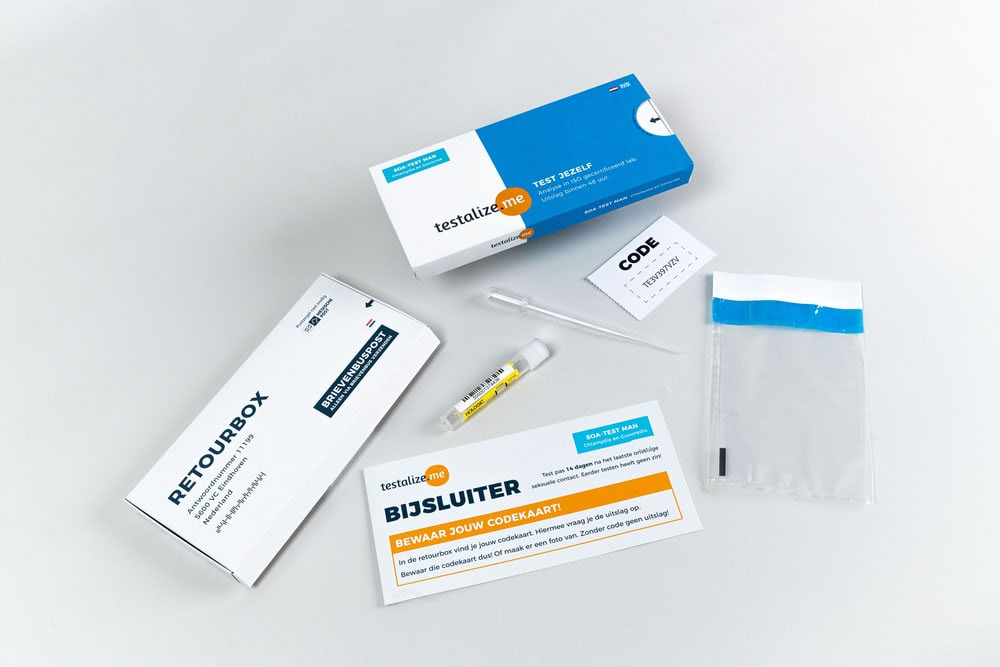
Meanwhile, there are also Chlamydia tests for home use, which are available via the Internet or in pharmacies. However, the results of such tests are not really trustworthy and can be wrong. So, if the test is positive or negative, you cannot be sure if the result is true. Therefore, a visit to the doctor is certainly better, as he can reliably encourage with his expertise and assess whether an examination for chlamydia in affected persons is useful at all or whether something else should be examined.
Chlamydial infection: Standard medical therapy.
A chlamydial infection can be treated with prescription antibiotics. Therapy is usually based on agents from the macrolide group (e.g., azithromycin, erythromycin) or tetracyclines (e.g., doxycycline).
Pregnant women and also children must not be treated with tetracyclines. As an alternative, treatment with the active ingredient erythromycin, for example, may be considered.
In a study, the antibiotic resistance, which has been known at least since 1980 and is now widespread worldwide, was again investigated and confirmed, and the potential danger was pointed out. According to the authors, the search for alternatives to antibiotics has become a major public health concern. Scientists are currently discovering numerous nontraditional approaches to dealing with antibiotic-resistant infections; these include secondary plant compounds such as the clove (Caryophyllus aromaticus), the jambul tree (Syzygium jambolanum), and a selection of other plants.
Note: Clove and Jambul tree as a food supplement.
Watch out for the ping-pong effect!
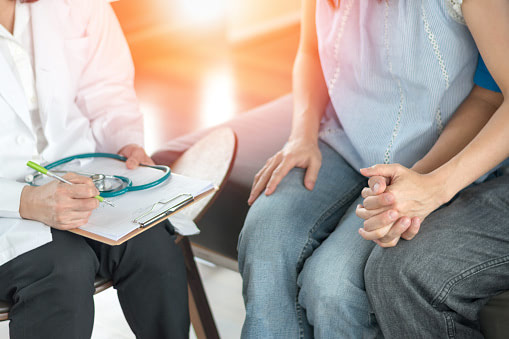
If you have been diagnosed with chlamydia infection, your partner could also be infected and should also be examined and treated if necessary. In this way, you can prevent infecting each other over and over again, which leads to a supposed ping-pong effect. Ideally, you should therefore inform all sexual partners of the last six months.
Chlamydia infection: Progression
In most cases, a chlamydial infection triggers only mild signs or may even often go unnoticed. Therefore, it makes sense to have even weak signs and symptoms clarified by a doctor. In this way, the disease can be treated as early as possible. This reduces the risk of difficulties.
Possible complications
Without treatment, women run the risk of the chlamydial infection spreading from the urinary system to the reproductive organs. The infection can therefore progress via inflammation of the Bartholin’s glands to cervicitis and inflammation of the fallopian tubes. From the fallopian tubes, the infection may eventually affect the ovaries. As a late consequence, there may be an inability to conceive if the chlamydial infection leads to a blockage of the fallopian tubes. As the disease progresses, there may be persistent pain in the lower abdomen. If a laparoscopy is performed in such situations, adhesions between the abdominal muscle and the liver can often be observed (so-called Fitz-Hugh-Curtis syndrome).
Other possible complications of a chlamydial infection are
- an ectopic as well as an abdominal pregnancy, and
- an increased risk of premature birth.
In men, chlamydia originally causes urethritis, which can spread to the prostate and epididymis if neglected. This can increase the risk of inability to conceive.
Infection of the newborn
In 60 to 70 percent of cases of untreated chlamydial infection in pregnant women, the microorganisms are transmitted to the newborn during the (normal) birth process. Therefore, conjunctivitis, pneumonia or, in rare cases, otitis media may occur and should be treated.
Responsive arthritis
Affected persons who had or have a chlamydial infection develop reactive joint inflammation a few weeks later in some cases. Young patients are particularly affected. This problem can manifest itself, among other things, as febrile inflammation of the joints.
In the course of reactive joint inflammation, inflammatory reactions can also occur in other parts of the body, for example in the eyes. If conjunctivitis and urethritis occur in addition to joint swelling, this is known as Reiter’s triad.
Chlamydia infection: Prevention
Chlamydia is transmitted through unprotected sexual intercourse. Therefore, the best way to protect yourself is to use condoms (also during rectal intercourse or foreplay).
30 Natural Therapies and Practical Home Remedies for Chlamydia Infections
1. Healthy and balanced diet plan
A healthy diet must be included in the menu. In times of infection, it must be given special attention. Fresh fruit, seasonal vegetables and a portion of natural yogurt with dextrorotatory lactic acid are recommended daily. Meat and also sausage should be consumed no more than twice a week. Adequate fluid intake is important.
The right diet plan is a good way to treat chlamydia. The useful components of fiber in the therapy of this disease should not be misjudged. 80% of your diet should consist of alkaline and high fiber foods.
An apple enriched with fiber is good for fighting infections. In addition, other nutrients in fruits are also good for keeping viruses and bacteria away. Beans and grains are also foods rich in fiber.
2. Garlic
Garlic is an antibacterial natural remedy that offers many health benefits. It is an effective remedy against infections. To get rid of chlamydia, you should eat raw garlic in salads or soups. Most of us eat it in prepared form, but after cooking it loses its health-promoting properties. Patients with chlamydia are additionally recommended to take garlic juice.
If the spicy taste of the plant is unbearable for you, you can take garlic preparations as a substitute .
3. Horseradish
Nowadays, unfortunately, horseradish is not given the attention it deserves. Yet fresh horseradish is really healthy, has a variety of applications and was once an important remedy for many ailments. Thus, it is not only reliable against viral infections, such as flu, but also has antibacterial properties. Daily two teaspoons of freshly grated horseradish, or in already grated form from the jar, stimulate the body’s immune system and can also be used as a home remedy against chlamydia.
4. Yogurt
Yogurt boosts immunity and provides the body with healthy bacteria that strengthen the body’s immune system in the fight against harmful pathogens. It is a natural probiotic that supports the health and well-being of the digestive tract.
Its consumption increases the concentration of probiotics in the intestine and protects it from microbial infections.
Research has shown that the Lactobacillus species extracted from yogurt are excellent in protecting against the penetration of viruses and protecting the body from infections. In case of infection, you should eat a cup of yogurt twice a day.
5. Vitamins
Vitamins are necessary for the proper implementation of bodily functions. Vitamin B is very important for the maintenance of cells and repair of the nervous system.
On the other hand, vitamin C is an excellent antioxidant that controls white blood cell function.
A lack of vitamins reduces the body’s ability to heal infections.
Note: Vitamin B complex and Vitamin C as a food supplement.
6. Avocado
Daily consumption of avocados can be an effective treatment for chlamydia. Avocados are enriched with nutrients and vitamins that protect our system from foreign bodies.
Avocados contain folic acid, glutathione and vitamin E. These antioxidants prevent infections and heal the body. The anti-inflammatory properties of the fruit reduce both the discomfort and inflammation of chlamydia.
Note: Vitamin B complex and Vitamin C as a food supplement.
7. Lemon/Cistus
Cistus is considered to have an extremely beneficial effect on the immune system. It has antiviral, antibacterial and also anti-inflammatory effects and is a fantastic free radical scavenger. As a tea or in the form of lozenges, cistus can support the therapy of chlamydia in addition to antibiotic treatment.
Lemon is used to treat chlamydia because of its high vitamin C content.
Vitamin C strengthens the body’s immune system to stop swelling. Just squeeze a lemon into a glass of water and drink it.
8. Cranberry
Cranberries are now a widely used remedy. They contain a lot of vitamin C and therefore have a positive effect on the well-being of the urinary tract. Vitamin C has many tasks in the body and is important for a functioning immune system. In case of chlamydia infection, the urethra is typically also affected, especially in men. This is exactly where the supply of the small berry as a juice or in the form of pills can help.
Healing clay
Healing clay can be used both externally and internally. Healing clay binds toxins as well as pathogens and can eliminate them from the body in a completely natural way. This simple home remedy is therefore definitely worth a try to eliminate chlamydia. Especially if in connection with the intake of the antibiotic the intestine is somewhat upset and the affected person suffers from intestinal sluggishness.
10. Propolis
Propolis is the putty material of bees. It is made by the bees mostly from building materials and also saliva. They use it to build, protect and detoxify their hive, as well as to ward off intruders. The bee swarm protects itself from infections with the help of propolis. Propolis has a strong germicidal effect and is an excellent home remedy, especially in the fight against microorganisms. Propolis preparations are commercially available in the form of pills, lozenges and drops. In the following, it is important to pay attention to the quality and purity. When using, start with small amounts, as this natural antibiotic can cause allergies.
11. Apple cider vinegar
Apple cider vinegar against chlamydia – It is known that apple cider vinegar is effective against inflammation in the human body. Due to its well-documented antibacterial properties, it is also used for all sorts of diseases.
Can apple cider vinegar cure chlamydia?
Apple cider vinegar can cure chlamydia because it helps to keep the vaginal canal sterile, eliminate all parasites, and remove infections and the unwanted odor of vaginal discharge.
Studies have shown that apple cider vinegar is effective against bacteria. It also helps maintain a normal balance between good and bad microorganisms in your body.
To use apple cider vinegar against chlamydia, add a few tablespoons to the tub.
Herbal treatments for chlamydia
12. Nasturtium
Nasturtium – An attractive plant with great healing properties – is used mainly for fungal and germ diseases. The mustard oil glycosides contained in it have an antibiotic effect. Fresh or dried leaves can be used for a tea, which must infuse for about seven to 10 minutes.
13. Green tea
When people try to find ways to get rid of chlamydia, they are often surprised to find that there are so many natural remedies.
Green tea is one of these organic preparations against chlamydia.
Green tea is rich in many antioxidants such as polyphenols, which protect the body from chlamydia infection.
Bring some water to a boil and add green tea leaves. After 10 minutes strain the combination, add a teaspoon of honey and drink.
14. Oregano oil
Oregano oil is one of the best natural home remedies for chlamydia. It is used for the treatment of various infections.
Thymol is the main component of the oil, which has disinfectant, antifungal, anti-inflammatory and antioxidant properties. It protects the body by removing all kinds of impurities.
Take a cup of water and add a few drops of the oil. Stir the mixture to make sure that the oil mixes with the water and then take it.
Also, you can apply the oil directly to the affected area.
Note: Do not consume oregano oil in large quantities, as it can be harmful to your health!
15. Aloe vera
Aloe vera is mainly used to strengthen the skin and hair structure. However, the plant also has anti-inflammatory and antifungal effects. The polysaccharide compounds of aloe vera stimulate the immune system.
It is also excellent for detoxification and regeneration. In addition, it is rich in vitamins C, E and B factors.
Apply the aloe vera gel directly to the affected area, or make it into a delicious smoothie mix.
16. Beard lichen (Unsea barbata)
Usnea is also known as the old man’s beard. It has antimicrobial properties sufficient to treat infections. This plant, which is a mixture of moss and algae, also has disinfectant properties.
These properties of the plant allow us to use it in the treatment of chlamydia. It also protects the body from fungal infections. The plant also strengthens the immune system weakened by prolonged infections.
17. Echinacea
This plant is effective for infections caused by microbes. It has anti-inflammatory properties that strengthen the body’s immune system in the fight against such infections.
It also relieves the unpleasant signs and symptoms of the disease.
You can consume echinacea by preparing a tea of echinacea with a little honey and water. The normal consumption of this tea helps to eliminate the infection.
The plant is usually available in powder form and can also be purchased quickly.
18. Sage
The plant has been used since ancient times to treat many problems related to the sexual organs. Sage tea prepared by soaking sage leaves in boiling water is effective in the treatment of infections.
According to research, sage is an antimicrobial antioxidant that removes unwanted substances from the body.
It is recommended to drink 4-5 cups of sage tea daily to cure chlamydia completely.
19. Turmeric – Extract
The use of turmeric as an antibacterial agent dates back to ancient times, making it an effective plant for treating infections and speeding up the healing process of inflamed cells.
It is also commonly used as a spice in the diet. The presence of curcumin also makes it an exceptional antioxidant.
Therefore, it can fight free radicals, the supporters of infections. Include turmeric in your diet or drink turmeric milk twice a day. The root of this plant also promotes the immune system of the body. In addition, it is recommended to take curcumin.
The turmeric plant contains berberine, an effective active ingredient that successfully kills germs and other bacteria.
Berberine has the ability to invigorate white blood cells and strengthen the immune system.
Taking turmeric extract is effective in eliminating microorganisms and also relieves unpleasant signs of the disease. It is an excellent natural remedy for chlamydia.
The tincture can be prepared by adding 3 teaspoons of the natural powder to 1/4 liter of well-tempered water.
You can additionally make a paste from walnut shells, echinacea and turmeric. Apply the paste to the affected area. Then wash it off.
Golden tea prepared from a tablet with 1/4 teaspoon of salt in a cup of cold water should be taken twice a day for 10 days to cure the disease.
20. Cat’s claw (Uncaria tomentosa)
Cat’s claw is used to treat many venereal diseases and bacterial infections.
The plant, in combination with gentian, has proven reliable in the treatment of chlamydia.
It is good for treating viral infections and strengthens the body’s immune system to fight infections. Take one 500 mg capsule three times a day to achieve the desired result.
Notes:
This plant can be deadly to pregnant and nursing women.
Those who have recently had an organ transplant should not take this plant.
People taking blood thinning medications are advised not to take them.
21. Saw Palmetto -Paw Palmetto- (Serenoa repens)
Saw palmetto is a great plant for treating infections. As a diuretic, it eliminates harmful microorganisms from the body and helps cells heal faster.
The antiseptic properties of the plant play an important role in the treatment of diseases of the genital area and strengthen the immune system.
Do not forget: Taking the plant in large quantities can cause intestinal blockage!
22. Neem oil
Neem oil is anti-inflammatory and also has antifungal properties. Both the leaves and the bark, both have antibacterial properties.
The oil of the plant or the crushed fallen leaves can be applied to the infected area. Neem, also known as Indian lavender, is also an effective ingredient in ointments against allergies or infections.
23. Olive leaf-Extract
Olive leaf extract contains oleuropein, a powerful ingredient that has antimicrobial properties.
Olive leaf extract comes in the form of powder, lotion, pills, dried leaves or liquid concentrate. The remedy can be taken orally or applied to the infected area to relieve inflammation.
The antibacterial properties heal the body by killing germs. The extract must be taken twice a week.
24. Tragacanth (Astragalus membranaceus)
Astragalus – The root of the plant (dried for 4-6 years) is used to treat diseases. Astragalus is rich in amino acids, flavonoids and also trace elements.
The plant is both antibacterial and anti-inflammatory, it strengthens the immune system of the body. It has a stimulating effect and rejuvenates the body. The origin can be taken in the form of dietary supplements.
Note: Pregnant women are advised to avoid this medicinal natural plant!
25. Gentian
The root of this plant is used as medicine. The plant serves as a natural antiseptic and anthelmintic.
Gentian is extensively used in the ancient Chinese system to treat sexually transmitted diseases. According to research, gentian tea has anti-inflammatory and antimicrobial effects, and also acts as a reliable antioxidant.
To do this, steam the root in water and squeeze out the liquid. Dip a cotton ball in this liquid and apply it to the infected area.
26. Aromatherapy
Chlamydia is extremely unpleasant and also the pain it causes can be alleviated by visiting a bath as well as using fragrant essential oils in it. The most suitable oil for dealing with inflammation is tea tree oil.
The anti-inflammatory and also antiseptic properties of this oil heal infections. But other oils such as lavender and myrrh oil are also recommended.
27. Sitz bath with chamomile decoction
Choosing the right natural herbs and taking a sitz bath with them can relieve symptoms and speed healing. The sitz baths should not be used too often, preferably only a few times a week. Care should be taken that the kidneys are covered with warm water and that the bathroom room is also at a comfortable temperature. For the chamomile preparation, a tea is prepared from a good handful of chamomile flowers and half a liter of boiling water. This should steep for at least 15 minutes and after straining it should be added to the water. To support the effect, a few drops of tea tree oil can be added to the chamomile. Chamomile has an anti-inflammatory effect and tea tree oil has an antiviral and antibacterial effect.
28. Sitz bath with yarrow
Yarrow is a well-known natural home remedy for menstrual cramps, mainly because of its antispasmodic and hemostatic properties. However, this natural herb has several other healing properties. Yarrow has anti-inflammatory effects in the area of mucous membranes. Therefore, this solution is also good for the treatment of chlamydia infections. 100 grams of dried yarrow herb is poured over one liter of boiling water. The whole must then infuse for about twenty minutes before it can be added to the bath water after straining.
29. Colostrum for the intestinal tract
The immune system of the human body is located almost exclusively in the intestine. Therefore, this is additionally the basis for a healthy protection. However, if antibiotics are taken, which is unavoidable in the case of chlamydia, this unfortunately eliminates most of the ” important “, physiological intestinal germs, which are, however, essential for a smoothly functioning body immune system. Colostrum contains vitamins, amino acids, but above all immunoglobulins, which can fight against the invaded germs and thus ensure a balance in the intestinal tract. Colostrum is commercially available in the form of capsules, powder, chewable tablets and also as a drinking solution.
30. Drink enough
Sufficient fluid intake is very important. Especially when microorganisms are in the urinary tract, they must be eliminated by drinking enough. Water is very important, especially if there are microorganisms in the urinary tract, they must be eliminated by drinking enough fluids. Regular urination is the goal, even if it involves temporary pain. Chlamydia usually triggers a urethral infection which, if you are unlucky, can develop into an incredibly agonizing kidney pelvic inflammation.
Water cleanses the body by eliminating toxins, harmful metabolic waste and also pollutants.
Add a quarter teaspoon of salt to the water to make it more effective. It is recommended to drink at least 12 glasses of water a day to remove toxins from the body.
FAQ
How do I know that I have chlamydia?
Usually not: about 90 percent of infected people have no signs. The disease usually begins with an inflammation of the cervix (cervicitis). This usually runs without signs, only sometimes a yellowish, sticky discharge appears. In about half of the cases, inflammation of the endometrium (endometritis) occurs, which may be manifested by light, recurrent bleeding or abdominal pain.
Why are chlamydia so dangerous?
The inflammation can infect the fallopian tubes. This usually leads to adhesions and/or damage to the tissue. Therefore, every fourth to fifth woman with a genital chlamydia infection is affected by a subsequent inability to conceive. She is unable to have children normally. In addition, there can be a number of other significant late effects – the inflammation can affect the joints, for example.
How long is a chlamydia infection transmissible to others?
Once the clinical diagnosis is confirmed, treatment with prescription antibiotics is given. To check the success of the treatment, a smear test is then taken – because a chlamydial infection can be persistent. Only when the result is negative can it be safely said that one is no longer infectious. Until then, those affected should take advantage of birth control treatment. And: Have your partner examined as well and treated if necessary.
(Note: As an Amazon affiliate, we earn on qualifying sales)
ICD codes for this disease: A74 | A74.8 | A74.9.
ICD codes are internationally valid codes for medical diagnoses. They can be found, for example, in doctors’ letters or on certificates of incapacity for work.
The web content of ÁYIO-Q.com is for your information and in no case replaces a personal consultation or treatment by a qualified physician. The contents of ÁYIO-Q.com cannot and must not be used to make independent diagnoses or for self-medication.
Sources:
- Facts about chlamydia, auf https://www.ecdc.europa.eu/, Accessed on 14.12.2021
- Chlamydia infection- Annual Epidemiological Report for 2018, auf https://www.ecdc.europa.eu/, Accessed on 14.12.2021
- Chlamydia, auf https://www.cdc.gov/std/chlamydia/default.htm, Accessed on 14.12.2021
- Chlamydia trachomatis, auf https://www.pschyrembel.de/, Accessed on 14.12.2021
- Krupp K, Madhivanan P. Antibiotic resistance in prevalent bacterial and protozoan sexually transmitted infections. Indian J Sex Transm Dis AIDS. 2015;36(1):3-8. doi:10.4103/0253-7184.156680
- Chandra H, Bishnoi P, Yadav A, Patni B, Mishra AP, Nautiyal AR. Antimicrobial Resistance and the Alternative Resources with Special Emphasis on Plant-Based Antimicrobials-A Review. Plants (Basel). 2017;6(2):16. Published 2017 Apr 10. doi:10.3390/plants6020016
- Suerbaum, S., et al.: Medical microbiology and infectiology. Springer Medizin Verlag, Heidelberg, Leitlinien der Deutsche STI-Gesellschaft e. V. (DSTIG) – Ges. z. Förderung der Sexuellen Gesundheit: Insomnie. AWMF-Leitlinien-Register Nr. 059/005 (Stand: August 2016)
- Schnede, P., Weidner, W.: Gonokokken- und Chlamydieninfektionen der Harnröhre. Die neuen Urethritisleitlinien. Der Urologe, Ausgabe 10, Jahrgang 53, S. , Springer Medizin Verlag (2014)
- Kayser, F. H., et al.: Medizinische Mikrobiologie. Thieme, Stuttgart Stauber, M., et al.: Gynäkologie und Geburtshilfe. Thieme, Stuttgart Chlamydiosen (Teil 1): Erkrankungen durch Chlamydia trachomatis. Online-Informationen des Robert Koch-Instituts: (Stand: 21.12.2010)
- Monika Mayer: Natürlich gesund mit Heilerde, AT Verlag; Auflage: 2 (1. Februar 2008)
- Das Kräuterbuch, https://www.kraeuter-buch.de, Accessed on 14.12.2021
- Chlamydia trachomatis, auf https://de.wikipedia.org/, Accessed on 14.12.2021
- Brown MA, Potroz MG, Teh SW, Cho NJ. Natural Products for the Treatment of Chlamydiaceae Infections. Microorganisms. 2016;4(4):39. Published 2016 Oct 16. doi:10.3390/microorganisms4040039
- Potroz MG, Cho NJ. Natural products for the treatment of trachoma and Chlamydia trachomatis. Molecules. 2015;20(3):4180-4203. Published 2015 Mar 5. doi:10.3390/molecules20034180
- Gitsels A, Sanders N, Vanrompay D. Chlamydial Infection From Outside to Inside. Front Microbiol. 2019;10:2329. Published 2019 Oct 9. doi:10.3389/fmicb.2019.02329
